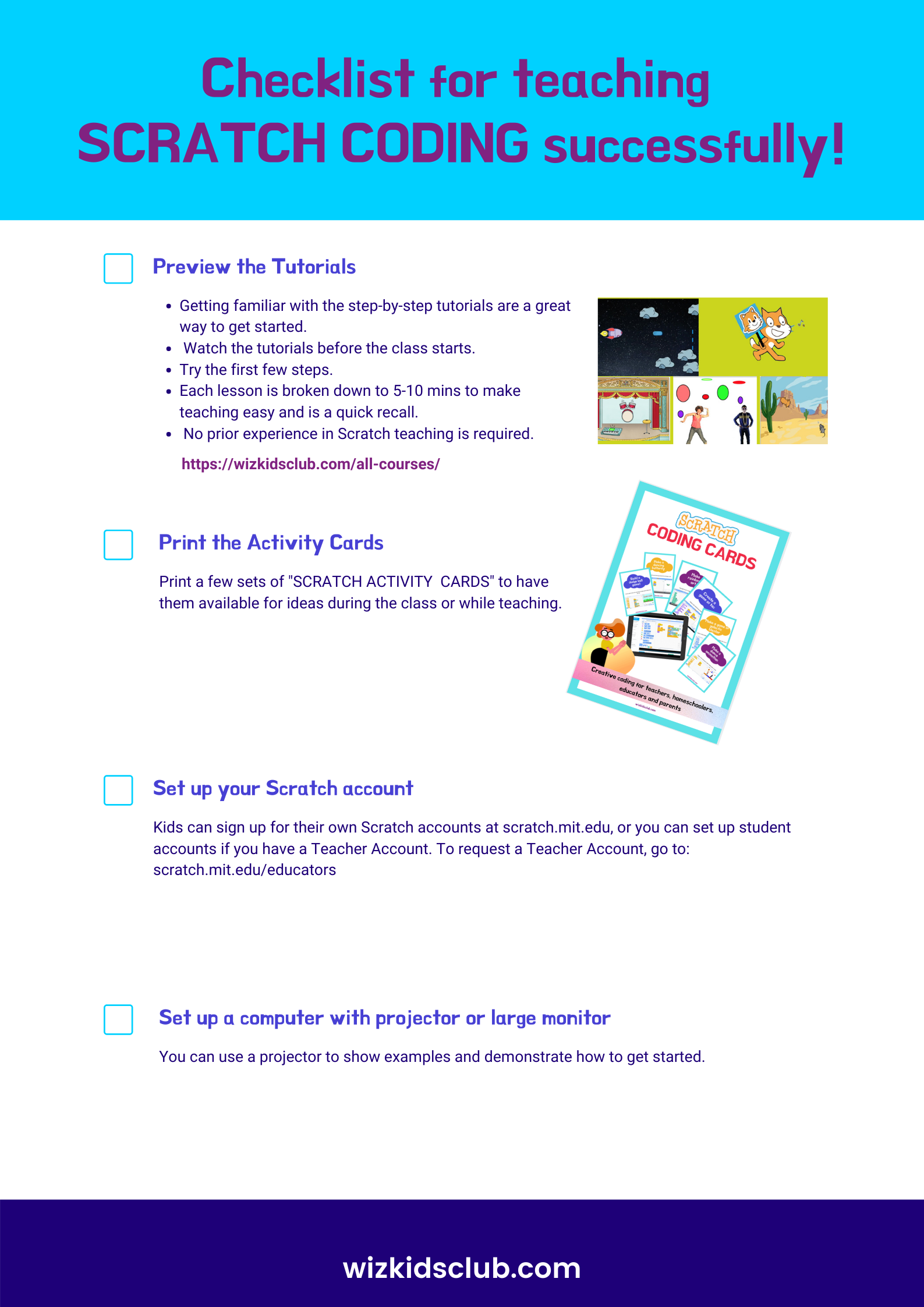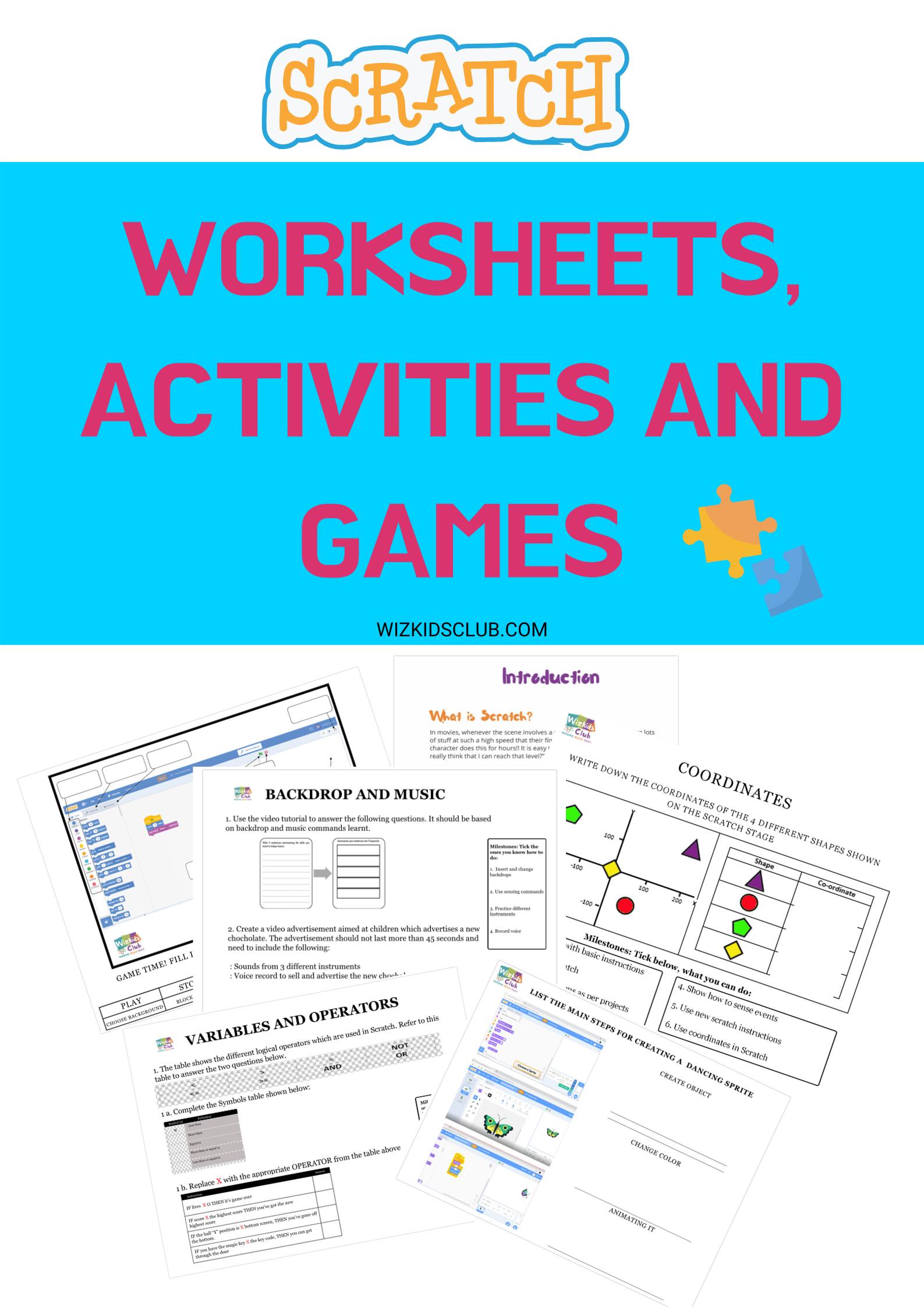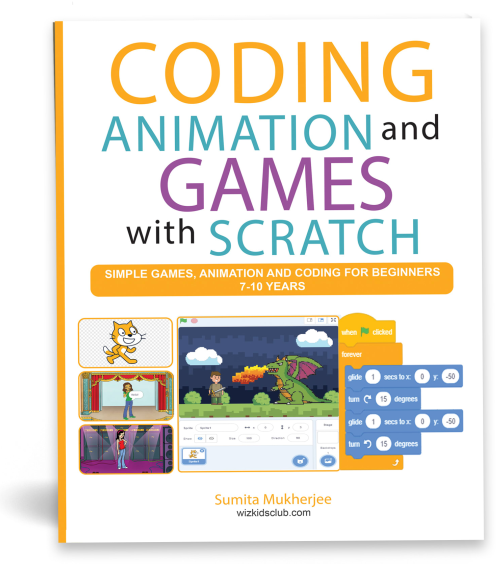If you are a teacher, homeschooler, educator or parent, who wants to teach kids Scratch programming and don’t know where to start or needs a consistent supply of activity ideas, worksheets, checklists and latest resources, you are in the right place! Here is the ultimate guide to get you started immediately.
Unfortunately, even though many K-12 schools actively offer coding classes, they typically do not have adequate resources and activities to ensure holistic understanding and resources for advancements. This results in teachers spending endless hours creating resources, making worksheets or converting them to digital classes. But you don’t have to do that anymore!
Wizkidsclub is here to make life easier for you! It has lot of exercises that introduce Scratch for beginners and progresses to advanced coding in its later courses. We have seen that these courses are preferred by educators and teachers, who do not have too much time to worry about making lesson plans, worksheets and activities. Less preparation with resources on the best and trending topics. Also, these classes can be proctored by teachers that have limited or no engineering backgrounds.
Wizkidsclub’s coding and technology courses are fun ways to get your child’s feet wet, and within a short period of time, many kids will be clamoring for more advanced content. WKC’s next level content allows students to create their own games, apps, machine learning and AI! Many of the courses teach using the same languages and tools that are used every day by software companies such as Facebook, Google, and Amazon. Programming in Scratch is taught through fun videos which explain programming in an inspiring and clear way. These videos are accompanied by assignments which let kids practice programming and create programs they will like to use themselves!
GET SCRATCH CODING VIDEO TUTORIALS HERE:
Ultimate guide to teach Scratch Coding successfully in classrooms and home: Grades 1-5
Here is collection of points that can get your started now. Get the printables ready, login sorted and classroom going. Then simply plug and pay!
Below I have provided you with a table of contents of what you can expect in this article. Each section nicely transitions to the next helping ensure your student is prepared for the digital age.
- Checklist for classroom success
- Scratch coding activity cards
- Scratch starter projects
- Worksheets, games and quizzes
- Taking it ahead: Advanced projects and FREE E-book with a ton of activities
1) Checklist for classroom success with SCRATCH CODING:
Download here scratch coding checklist
2) Scratch coding activity cards:
3) Scratch Starter Projects:
4) Worksheets, games and quizzes.
5) Taking it ahead:
Once kids are well versed with beginner’s level coding and programming. Challenge their skills by doing advanced projects here:
Soon they will be making chat bots and AI in the next courses of Python programming.
Grab the Amazon’s best selling e-book for FREE. A book with many more activities, prompts and project ideas.
What makes Wizkidsclub unique is, your kids learn the coding languages necessary to build websites, create real games, apps, and more. We also include unlimited access to a team of friendly mentors that will help you through chat or screen share if your child ever gets stuck and needs help. At only $6.99 per month for over 100 hours of student projects, it is an excellent value.When you invest in outside resources, kids learn really well and it builds a strong foundation. After running this course, they will be ready to make amazing projects.
Click here to start your free 3-day trial!
Conclusion:
Coding for kids is growing in popularity, as many families view computing as a new literacy that will be as important as math and science in tomorrow’s job market. There are many approaches to selecting suitable courses for K-12 students, and there are certainly no “one-size-fits-all” solutions. The most important piece of advice we can offer is to make coding fun. Coding for kids doesn’t need to be boring. Yes, it demands patience and persistence, but if kids know that the payout is a project, game, or app that they are interested in, they will put in the work. If it is taught the wrong way, coding for kids can seem like a boring typing class or even worse a 50 step math word problem. If you choose well, however, you will give your kids a new skill that is both fun and academic, and you may be surprised to see the positive effects that it has on their academics and self-confidence.





